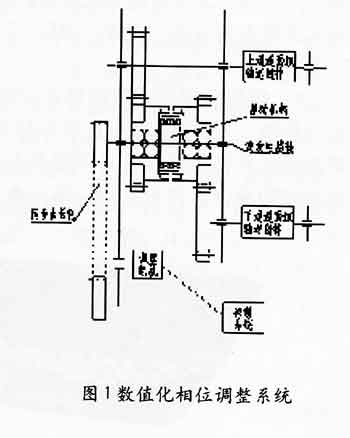The FM1450 machine is a machine that combines and glues two pieces of paper together. The bottom paper used is a single-faced corrugated paperboard. The front paper is a color printing paper. Through the transportation, gluing, compounding and pasting of the bottom paper and the top paper, the composite corrugated paperboard not only has higher strength, but also has a more eye-catching and beautiful pattern. It is a new type of high-precision, high-efficiency equipment that continuously produces high-quality color printing paper boxes.
In the synchronous conveying process of the paper and the bottom paper, the relative position of the two is a direct factor that affects the accuracy of the paperboard composite. The face paper is composed of a motor, a paper feeding board and a paper conveying rack. The bottom paper is conveyed by the lower channel chain composed of an auxiliary suction belt and a conveying frame. The phase difference between the upper and lower passages of the paper is passed through the composite sleeve. The misalignment of the paper and the bottom paper is formed, which is called the overlay accuracy of the paperboard.

The principle of the execution unit is based on the differential mechanism composed of harmonic gears. The main components of the harmonic gear transmission are only three harmonic generators, active rigid wheels and driven flexible wheels, which constitute a differential transmission mechanism. It is a digital phase adjustment device of the FM1450 type cladding machine. In the on state, when the composite paper and the bottom paper are found to be misaligned, the adjustment motor is started, the generator shaft is driven by the large and small timing pulleys, and the harmonic gear differential mechanism works, and the speed ratio between the upper and lower channels is activated. Slightly greater than (or less than) 1, that is, the additional differential speed ratio of about ±O.003 is imposed on the isochronous transporting movement to form the differential between the upper and lower channel chain rows to realize the phase adjustment of the surface paper transport and the bottom paper transport. When the desired target is reached, close the adjustment motor and try to lock the wave generator shaft. Harmonic gear differential mechanism does not work. The speed ratio between the upper and lower channels is equal to l, and the paper conveying and bottom paper conveying are maintained. Run synchronously.

In this patent design scheme (see Fig. 2), two-phase hybrid stepper motors (with a gearbox of l:10) are used to adjust the motor. An electric pulse is supplied by a dedicated power supply. Each pulse is input to the power supply. The motor advances further. The angular displacement is proportional to the number of pulses. The speed is proportional to the pulse frequency. It can be adjusted in a wide range by changing the frequency of the pulse. It can be started, reversed and braked quickly. When a phase winding is energized for a long time, it is self-locking. ability. The adjustment motor has the characteristics of high adjustment accuracy and fast transmission speed. The control system uses the Meag 128M CO controller as its control core, including a numeric keypad, 5-inch LCD, a speed sensor, Count sensorl, and stepper drive motor.
When turned on normally, the LCD screen shows the current speed of the machine and the total number of pages opened. When there is an error between the backing paper and the facial paper, press the setup button to enter the screen for setting and adjusting the backing paper, and input the error value that you want to eliminate. After the keyboard is input, the internal Meagl28 MCO will input the value according to the prior The set algorithm converts the frequency and number of input pulses. Because Meagl28 operates extremely fast, the fastest is 12 million instructions/s. Therefore, when the keyboard value is input from the outside, the motor is immediately started and adjusted to ensure that the second error is reduced to within the allowable range. When the motor stops, the stepper motor has a static force distance (ie, a torque when the motor is stationary when the motor is stationary). The moment has been accurately calculated at design time to ensure that the motor is stationary when there is no pulse output and will not be driven by the load.
When the composite paper and bottom paper are found to be misaligned, observe the cardboard misalignment amount, estimate the linear displacement value L (unit: mm) that needs to be adjusted, press the key to input the target value L, and the controller converts the target value into the number of pulses. N, then send a pulse number N to the stepper motor, drive the wave generator axis in the harmonic wave differential mechanism to rotate through the corresponding angular displacement θ, and the driven flexible wheel outputs the differential rotation angle to drive the lower channel chain to synchronize The differential motion is superimposed on the speed, and the linear displacement amount is equal to the originally input target value L. Within the range of the load capacity, the stepping motor will not desynchronize with the change of the power supply voltage, load, and environmental conditions, so the open-loop control can Ensure that the displacement value output by the phase adjustment device is equal to the input target value.